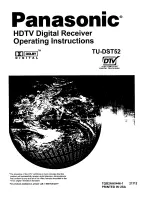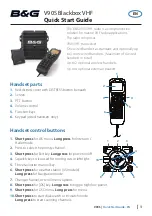
UHF Digital Hybrid Wireless
®
Rio Rancho, NM
25
Symptom
Possible
Cause
ANTENNAS AND RF SIGNAL STRENGTH
RF Level is weak
Receiver may need to be moved or reoriented.
Antenna on transmitter or receiver may be defective or poorly
connected - double check antennas.
Improper length of antenna, or wrong antenna on transmitter or
receiver. UHF whip antennas are generally about 3 to 5 inches long.
UHF helical antennas may be shorter, but are often less efficient.
No RF Signal
Make certain the frequency set on the transmitter matches the receiver
frequency setting.
Check battery in transmitter.
AUDIO SIGNAL QUALITY
Poor signal-to-noise ratio
Transmitter gain set too low.
The noise may not be in the wireless system. Turn the transmitter
audio gain all the way down and see if the noise remains. If the
noise remains, then turn the power off on the transmitter and see if it
remains. If the noise is still present, then the problem is not in the
transmitter.
If noise is still present when the transmitter is turned off, try lowering
the audio output level on the receiver and see if the noise lowers
correspondingly. If the noise remains, the problem is not in the
receiver.
Receiver output is too low for the input of the device it is feeding.
Try increasing the output level of the receiver and lowering the
input gain on the device the receiver is feeding.
Distortion
Transmitter input gain too high. Check and/or readjust input gain on
transmitter according to the LEDs on the transmitter and then verify
the setting with the audio meter in the main window.
Audio output level too high for the device the receiver is feeding.
Lower the output level of the receiver.
Poor frequency response or generally poor audio quality
Ensure the receiver is set to the compatibility mode that matches
the transmitter in use.




































